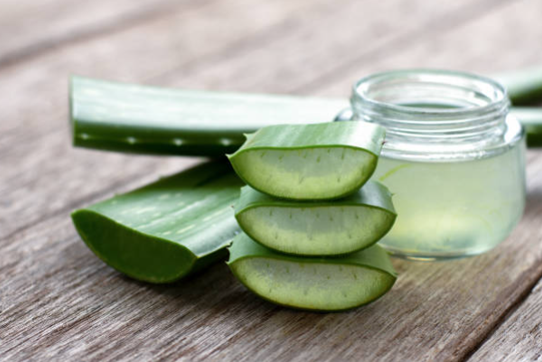Aloe Vera Oil

Proven Health Benefits of Aloe Vera Oil
- Moisturizes hair follicles and prevents breakages
- Aloe oil is a good remedy for dandruff
- Aloe oil removes excess dead cells from scalp and leaves a good elastic skin
- It has excellent wound healing abilities
- Gives shine and gloss to hair and skin
- Aloe Vera oil supports skin growth.
What is Aloe Oil?
Aloe oil, is obviously from the plant, Aloe vera. For all its fame, throughout the ages, if you thought that there might be something oily about it, you are probably right. Aloe oil is arguably the number one cosmetic choice, both in commercial industry and DIY products. Contrary to popular belief, Aloe Vera does have oil, as does every other plant, and one can find cold-pressed aloe oils if they look hard enough. Aloe’s oil has a profile, which shows more saturated oil, specifically, palmitic acid, as the most abundant fatty acid. The are also mono and poly unsaturated fatty acids, representing about 33% altogether in the profile.1 However, it is a fact that most of the “aloe oil” products are actually the aloe gel that have been incorporated into an adjunct oil, usually coconut oil. To do so, the gel is fillet out of pieces of the leaf, and blended with the oil, with slight heating to get a better uniform mixture. This type of Aloe Vera oil is mostly for topical use.
What is the usefulness of Aloe Oil?
Not much work has been done on pure aloe oil. The reasons may be because, from the profile, pure aloe oil resemble just any other, the oil is not as abundant in the plant, and quite frankly, the most desired components in aloe are the polysaccharides, amino complexes and other phytochemicals; and one does not need the oil to acquire these. The popular aloe oils, as we have them with adjuncts, do preserve the exceptional qualities of Aloe Vera. It has been observed, that for topical use, glucomannan and other phytochemicals still retain their ability to pull wounds together and help heal them.2 Clinical observations have also been made with respect to hair growth, luster and moisturizing effects by aloe oil mixture.3 Antifungal activity is also still prominent in aloe oil mixture, as observed when treating skin conditions like eczema.
Health benefits:
- Antifungal
- Wound healing
- Moisturizing effect
- Hair luster and growth
- Prevents hair breakage
- Dandruff
Nutrition:
Pure aloe oil has a profile of 67% saturated, 14% monounsaturated and 19% polyunsaturated fatty acids. The most abundant fatty acids are palmitic acid for unsaturated, oleic and linoleic acids for mono and poly unsaturated fatty acids, respectively. The chief component in aloe oil mixtures with adjuncts, is the gel from the leaf of Aloe Vera. That consists, mostly of water, but take that away and it becomes chiefly fiber. The composition is as follows:
- Fiber – 57%
- Available carbohydrates – 37%
- Protein – 2.6%
- Fat – 1%
- Ash – 9%
There are also relatively huge amounts of organic acids and tocopherols.
Toxicity:
Aloe Vera oil mixtures may also give adverse reaction to a few people with sensitive skin. This may show in redness of skin, itchiness and burning sensations. One is always advised to apply the oil to a small portion of skin first to ascertain non-reaction before full application.